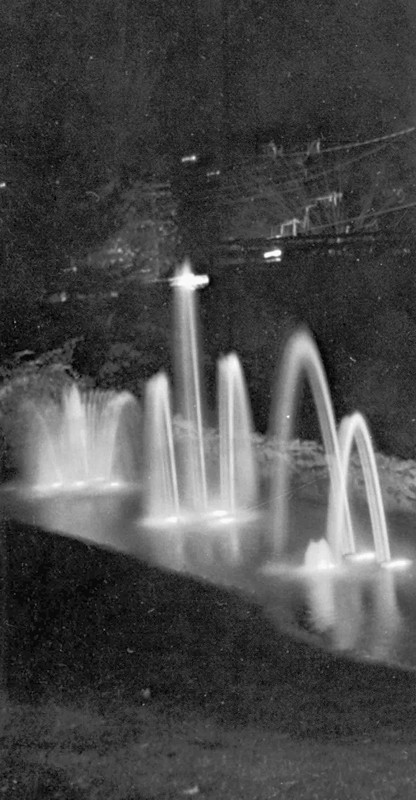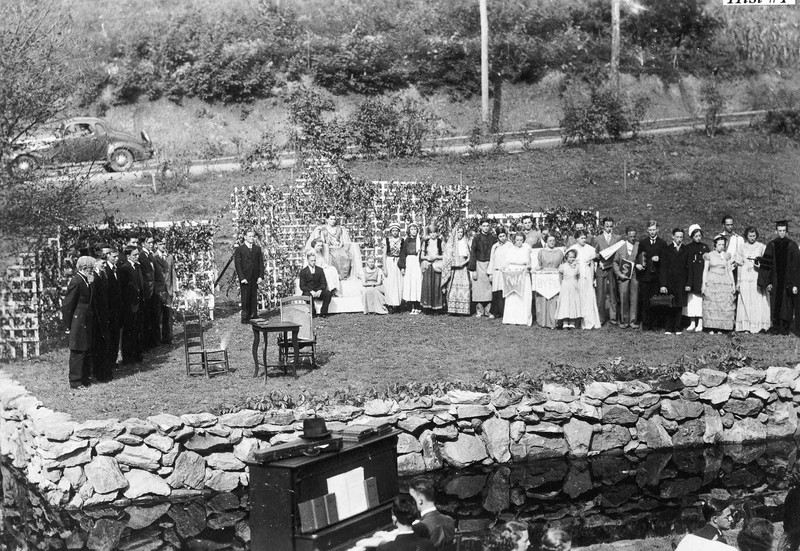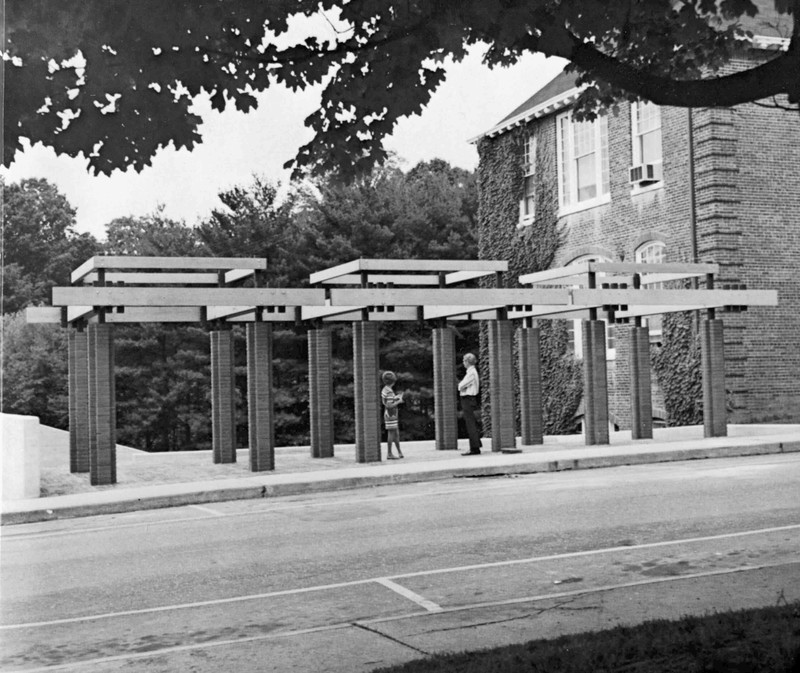Mars Hill University's Anderson Amphitheater
Introduction
Text-to-speech Audio
Images
Amphitheater and Wood Cottage. The wood cottage is no longer standing on campus.

Amphitheater fountain at night.

1936 Mars Hill College historical pageant in Amphitheater.

Entrance to the Anderson Amphitheater, 1975.

Backstory and Context
Text-to-speech Audio
During the early 1900s, amphitheaters, or open-air theaters, became a common site on college campuses across the country. These structures would be used for plays, concerts, and other entertainment events provided by the college. Articles from the 1935 Mars Hill College student newspaper The Hilltop recounts the construction of Mars Hill’s amphitheater that same year. Supervised by Clayton I. Poor of Asheville and Bryson H. Tilson, superintendent of buildings and grounds at Mars Hill, the Mars Hill College amphitheater was constructed by students who were able to use the selected spots natural slope to provide excellent seating for the structure.
The amphitheater consists of two main parts, the stage and the seating. The design of the stage was a slightly evaluated rectangular platform, covered in grass and surrounded on three sides by a stone retaining wall. A shallow reflecting pool that encircles the front of the stage designed to enhance the aesthetics of the stage was built. The backside of the stage, which parallels present day Bailey Street, originally had hemlock and white pine trees planted behind it, which formed a dense background for the events taking place on stage. The original landscape designed for the amphitheater extended behind Marshbanks Hall and into the sunken garden found between Marshbanks and Spilman Halls. Today, remnants of the stone masonry designed survive in this garden.
The seats of the amphitheater comprise of sixteen concentric, arched, flat benches. In 1971, the original quadrangle entrance to the amphitheater underwent renovations to include a wisteria-covered wood trellis and a low wall that creates a visual enclosure across the rear of the amphitheater. Today, the amphitheater sits between McConnell Gymnasium and Marshbanks Hall and although the reflecting pool is dry and many of the original trees gone, much of the original structure still survives.
Sources
Mars Hill College: Emphasis Records Catalog, 1985-86. North Carolina: Mars Hill College, 1985.
“New Amphitheater.” The Hilltop, October 3, 1935
“Students Build Amphitheater.” The Hilltop, October 11, 1935
